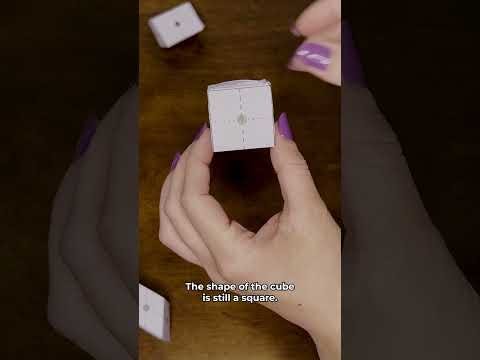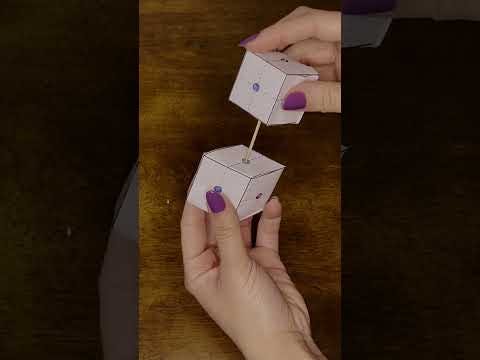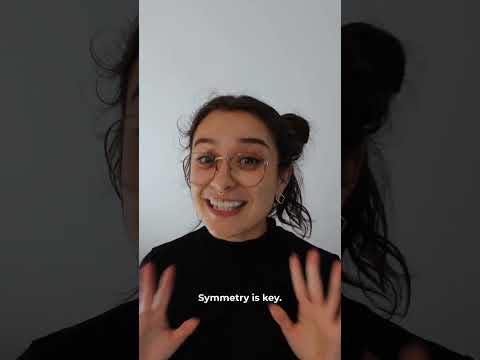- Skip to SectionOverview
- Lesson Preview
- Teaching Materials
- Feedback
- Background
- Learning Standards
- Credits
- Acknowledgments
- Version Notes
- Overview
- Lesson Preview
- Teaching Materials
- Feedback
- Background
- Learning Standards
- Credits
- Acknowledgments
- Version Notes
The Gist:
Crystals aren't magic, but they are amazing! In this student-driven, lecture-free lesson, students will do card sorts, build hands-on models, solve engineering design puzzles, and more! The whole experience is connected through a beautifully crafted comic and supporting videos.
Target Subject:
Grades:
Estimated Time:
Target Subject:
ScienceGrades:
7-12Estimated Time:
4 x 45 min classes

Subject breakdown by standard alignments
Driving Question(s):
- What are crystals and how do they form?
- How is molecular microstructure connected to functionality and properties we can easily observe?
Essential Question(s):
Why are abstract concepts like geometry important for “real life”?
Hook(s):
An engaging, original comic weaves together background information, hands-on activities, puzzles, and problem sets. Quick videos stoke curiosity and provide support for activities.
Keywords:
crystalsengineering applicationssymmetryphysicsComic-infused worksheets
Caroline Hu's comics teach important science concepts and captivate students!
SPEX 3000 Cards
Students connect with the comic narrative using these cards to investigate properties of crystals versus amorphous solids.
Unit Cell Handout
Cutouts to construct the 3D paper models of crystal unit cells. Students can construct several, or combine with classmates' models.
Exploring Crystal Structure and Symmetry (Part 1)
Watch Madelyn guide students in constructing unit cells from paper cutouts.
Exploring Crystal Structure and Symmetry (Part 2)
Madelyn shows how to use unit cell models to understand 3D symmetry in different structures.
The Magic of Piezoelectricity: How Crystals Create Lightning
Madelyn explains piezoelectricity and how it relates to unit cell symmetry.
3 x 45 min
This lesson is largely student driven. There is no lecture or presentation. Videos provide check-ins and supports. The primary teacher role is to facilitate classroom discussions and engagement.
Available Grade Bands
Available Teaching Environments
Learning Objectives
Students will be able to...
Understand how molecules form the building blocks of solids, and how crystals have repeating units called "unit cells."
Synthesize information about different materials to classify them as "crystals" versus "amorphous solids."
Materials for Grades 7-12
SPEX 3000 Crystals vs. Amorphous Solids Card Set (Part 1)
Print 1 per Student
Student Worksheet (Part 1)
Print 1 per Student
- For teachers guides, sign in with a free account!
Teacher Worksheet (Part 1)
Print 1 Copy
Steps & Flow
5 min: Warm-Up
5 min: Warm-Up
1.Welcome to The Crystal Factory
Welcome to The Crystal Factory
1.Welcome to The Crystal Factory
Welcome to The Crystal Factory
Start the tour of the factory!
Read the first two comic pages to meet the tour guide, Krista, and enter the crystal factory. Students in the comic have brought items they think might be a crystal. Students are prompted to imagine what item they might bring to a tour of the crystal factory.
30 min: The Microstructure of Crystals
30 min: The Microstructure of Crystals
2.SPEX 3000 Mystery Solid Analysis
SPEX 3000 Mystery Solid Analysis
2.SPEX 3000 Mystery Solid Analysis
SPEX 3000 Mystery Solid Analysis
Examine the analysis summaries for each of the items fed into the SPEX 3000.
Students will read and sort the analysis summary cards generated by the SPEX 3000 machine: ♧ SPEX 3000 Cards. Each card lists the name of the sample and examples of its visual, microscopic, and chemical structure. The worksheet prompts students to sort these cards in order of personal interest and usefulness.
3.Is It a Crystal?
Is It a Crystal?
3.Is It a Crystal?
Is It a Crystal?
The definition of a "crystal" is introduced and students determine which of the mystery solids are crystals.
In the comic, Krista explains the definition of a crystal, and students will use the "computed chemical structure" section of each SPEX 3000 summary to determine if the mystery solids are crystals or not. Krista also introduces the concept of an amorphous solid, which is not microscopically ordered in the same way as a crystal, and therefore has different kinds of uses. Students will use the worksheet to summarize their understanding of crystals and amorphous solids, and the differences between them.
- crystal: a material which is highly organized on a microscopic scale AND has well-defined planes of symmetry (example: quartz)
- amorphous solid: a solid with some repeating structure like a crystal, but arranged in a disordered way (example: glass)
10 min: Wind-Down
10 min: Wind-Down
4.Debrief
Debrief
4.Debrief
Debrief
Reflect on the first activity of the factory tour.
The worksheet asks students to reflect on what they learned, what they found surprising, and what they're still curious about.
Learning Objectives
Students will be able to...
Understand how molecules form the building blocks of solids, and how crystals have repeating units called "unit cells."
Construct a model of table salt crystal microstructure and use the model to infer properties of the crystal "unit cell."
Interpret models to predict how macrostructure will follow microstructure
Materials for Grades 7-12
- For teachers guides, sign in with a free account!
Teacher Worksheet (Part 2)
Print 1 Copy
Student Worksheet (Part 2)
Print 1 per Student
Steps & Flow
5 min: Warm-Up
5 min: Warm-Up
1.The Unit Cell
The Unit Cell
1.The Unit Cell
The Unit Cell
Meet the most basic building block of a crystal.
Read the first page of the worksheet to learn that unit cells are the building blocks of a crystal. They can't be divided any farther, or they won't grow into a full crystal. However, unit cells contain lots of molecules and atoms inside them.
- unit cell: the smallest possible piece of a crystal
2.Activity Prep
Activity Prep
2.Activity Prep
Activity Prep
Assemble your supplies for the molecule-building activity.
Each student should obtain 14 gumdrops or grapes of each color, as well as 42 toothpicks.
30 min: The Molecular Structure of NaCl (Table Salt)
30 min: The Molecular Structure of NaCl (Table Salt)
3.The Parts of an Atom and Ionic Bonding
The Parts of an Atom and Ionic Bonding
3.The Parts of an Atom and Ionic Bonding
The Parts of an Atom and Ionic Bonding
Background about some super cool chemistry stuff.
Panels on the worksheet define the parts of an atom-- protons, electrons, and neutrons-- and the concept of electron shells. The process of ionic bonding is also introduced, and students are guided through some comprehension questions to solidify their understanding of these definitions.
- proton: positively charged particle
- neutron: neutrally charged particle
- electron: negatively charged particle
- nucleus: center of an atom where protons and neutrons are found
- shell: different energy levels of the electron cloud surrounding a nucleus
4.The NaCl Unit Cell
The NaCl Unit Cell
4.The NaCl Unit Cell
The NaCl Unit Cell
Using toothpicks and gumdrops or grapes to build molecular models and a unit cell.
The worksheet guides students through building four NaCl molecules to start, then the process of connecting the molecules together to begin forming a crystal structure. The symmetry rules of the chemical bonds are summarized, and students are prompted with several comprehension questions on these rules. Students finish building an entire NaCl unit cube, and reflect on its shape and usefulness.
10 min: The Molecular Structure of SiO2 (Quartz)
10 min: The Molecular Structure of SiO2 (Quartz)
5.Covalent Bonding
Covalent Bonding
5.Covalent Bonding
Covalent Bonding
Introduction to the more complicated bonds in SiO2 molecules.
Panels on the worksheet introduce the concept of covalent bonding, then explain that the chemical bonds inside SiO2 molecules are more complex than those in NaCl.
6.(Bonus Challenge: Building SiO2 Molecules)
(Bonus Challenge: Building SiO2 Molecules)
6.(Bonus Challenge: Building SiO2 Molecules)
(Bonus Challenge: Building SiO2 Molecules)
Using toothpicks and gumdrops or grapes to build molecular models.
More advanced students might enjoy the challenge of building several SiO2 molecular models then attempting to fit them together as a unit cell.
7.The SiO2 Unit Cell
The SiO2 Unit Cell
7.The SiO2 Unit Cell
The SiO2 Unit Cell
Diagrams of the SiO2 unit cell.
Projections of the SiO2 unit cell are discussed to lay the foundation for concepts covered in P4. Students can also explore a 3D model of the quartz unit cell, and notice that viewing the cell from different angles produces different projections.
Learning Objectives
Students will be able to...
Understand how molecules form the building blocks of solids, and how crystals have repeating units called "unit cells."
Analyze paper models of different crystal unit cells to assess rotational symmetry and other properties.
Interpret models to predict how macrostructure will follow microstructure
Materials for Grades 7-12
Crystal 3D Unit Cell Activity Handout (Part 3)
Print at least 1 per student. Need scissors and tape.
- For teachers guides, sign in with a free account!
Teacher Worksheet (Part 3)
Print 1 Copy
Student Worksheet (Part 3)
Print 1 per Student
Steps & Flow
10 min: Warm-Up
10 min: Warm-Up
1.Unit Cell Models
Unit Cell Models
1.Unit Cell Models
Unit Cell Models
Cut out and assemble unit cell models from paper.
Following the instructions on the worksheet, cut out the unit cell meshes: ➚ Unit Cell Handout. These models will be used throughout the rest of the lesson.
25 min: Symmetry of the Unit Cell
25 min: Symmetry of the Unit Cell
2.What's a Symmetry?
What's a Symmetry?
2.What's a Symmetry?
What's a Symmetry?
Definitions of rotational and mirror symmetries.
The worksheet shows some examples of rotational and mirror symmetries. Also, check in with a video where Madelyn explains how to observe the symmetries of our unit cell models: ▶ Exploring Crystal Structure and Symmetry (Part 1)
3.Replace the Unit Cell File Labels
Replace the Unit Cell File Labels
3.Replace the Unit Cell File Labels
Replace the Unit Cell File Labels
Use observations of the unit cell models to identify lost file labels.
The newest employee at The Crystal Factory lost the labels for two of the unit cell files. Students will identify the symmetries of each unit cell model and fill out tables with the relevant information. They'll use the information they gather to determine the missing labels for the file cards.
4.Build a Crystal
Build a Crystal
4.Build a Crystal
Build a Crystal
Build a crystal structure from unit cells.
Students will work together (or build more unit cell models, if they're working individually) to create a large crystal structure from their paper unit cells. They'll then reflect on the process of building a crystal from unit cells as opposed to individual molecules. Students can check in again with a video where Madelyn explains how symmetry restricts the ways crystals can form: ▶ Exploring Crystal Structure and Symmetry (Part 2)
10 min: Wind-Down
10 min: Wind-Down
5.Design Challenge
Design Challenge
5.Design Challenge
Design Challenge
Try to create a unit cell without rotational or mirror symmetries.
Things can go wrong if a crystal doesn't have the proper symmetries. Students are prompted to create a unit cell without the symmetries we discuss in this lesson. The comic gives a hint as to how crystals grow from their unit cells, and the special properties their symmetry imparts!
Learning Objectives
Students will be able to...
Understand how molecules form the building blocks of solids, and how crystals have repeating units called "unit cells."
Interpret models to predict how macrostructure will follow microstructure
Perform (scaffolded) calculations based on molecular net charge to determine if different materials are piezoelectric (i.e. produce electricity when squeezed).
Envision electronic applications based on the properties of crystals
Materials for Grades 7-12
- For teachers guides, sign in with a free account!
Teacher Worksheet (Part 4)
Print 1 Copy
Student Worksheet (Part 4)
Print 1 per Student
Steps & Flow
5 min: Warm-Up
5 min: Warm-Up
1.Crystals' Shocking Properties
Crystals' Shocking Properties
1.Crystals' Shocking Properties
Crystals' Shocking Properties
One of crystals' seemingly magical properties: the piezoelectric effect!
The comic introduces the concept of piezoelectricity: the phenomenon where a mechanical deformation results in a small charge on the surface of a crystal.
- piezoelectric: mechanical deformations result in a small electric charge
25 min: The PIezoelectric Effect
25 min: The PIezoelectric Effect
2.Dipole Moment
Dipole Moment
2.Dipole Moment
Dipole Moment
Learn about dipole moment of a configuration of charges.
Read the worksheet's explanation of dipole moment, and how geometry affects electric charge just as much as charge magnitude does. Students are guided through an example dipole moment calculation for an undeformed NaCl configuration. They're then prompted to calculate the dipole moment for the SiO2 configurations.
- dipole moment: quantifies the strength a charge separation, can be detected as an electrical signal
3.Symmetry is Key
Symmetry is Key
3.Symmetry is Key
Symmetry is Key
Check in with a video about the effects of symmetry on crystal properties.
In this video Madelyn explains the source of piezoelectricity and how the symmetry of atoms inside a unit cell determines whether the material is piezoelectric. Students will then reflect on their NaCl and SiO2 calculations with this new explanation in mind.
10 min: Piezos in Action
10 min: Piezos in Action
4.Identify the Device
Identify the Device
4.Identify the Device
Identify the Device
Based on schematic diagrams, determine the identity of devices with piezos.
The properties of piezoelectric crystals mean they can be used as a a sensor or an actuator. Listed in a wordbank are six devices which use actual piezos. Students will use the wordbank to determine which devices are represented by the schematic diagrams.
5 min: Wind-Down
5 min: Wind-Down
5.The Crystal Factory Feedback Form
The Crystal Factory Feedback Form
5.The Crystal Factory Feedback Form
The Crystal Factory Feedback Form
Please fill out the survey to leave feedback for The Crystal Factory employees.
On this feedback form students can reflect on their favorite part of the tour, any remaining questions, and topics they're excited to learn more about. The comic ends with Krista geeking out about the amazing applications of symmetry and crystals, and the students on the tour seem to really get the message!
Please let us know how it went with your class!
We want to know what you (and/or your students) think!
Share your feedback in < 5 min with these forms:
Connection to Research
Students explore the various ways that scientists study crystals across scales: molecular models, modular unit cells, and bulk solid materials. They learn not only about crystals, but also the value of representing the same information in several ways to learn different things. This lesson is also an exploration of symmetry and its importance in nature. Symmetry is what allows crystals to grow, and also what gives them some of their special powers, like the piezoelectric effect! Through video demonstrations and clear worksheet instructions, students are guided through activities in 3D modeling as well as electric dipole calculations to experience how symmetry determines all the properties of a crystal.
Research Background
Crystals occupy a very specific niche in public discourse—especially with the controversy about their supposed powers for magic and healing. Yet these fantastic, naturally occurring materials are truly essential for our lives in many concrete ways. We need many types of crystals to maintain our health, such as salt or iodine. And most of our technology, such as semiconductor chips, depends on the regular structures that atoms form in crystals. The discovery of piezoelectric materials in the 1800s further revolutionized our technological devices. Piezos are useful for sensing and actuation, and can sense and deform very precisely. These materials are all around us, but typically their properties are only studied by advanced graduate students in material science, electrical engineering, or physics. At the end of the day, the special features of these amazing materials depend entirely on the (a)symmetry of the crystal structure.
Further Reading:
- It’s a Material World Podcast: Piezoelectric Materials: In Your Body, Underwater, and In Space
- Graz University of Technology: Advanced Solid State Physics | Piezoelectricity
- Journal of Physics: Conference Series | The Piezoelectric Effect – an Indispensable Solid State Effect for Contemporary Actuator and Sensor Technologies
Target Standard(s)
Dimension: Science & Engineering Practices
How does the lesson address this standard?
Using unit cell models, students predict what the final crystal structure might look like.
How does the lesson address this standard?
Students create molecular models of crystal unit cells, as well as geometric models of unit cells. They interpret how the two types of representations have different benefits and uses, and when each representation might be useful.
How does the lesson address this standard?
Molecular and geometric models of the unit cells are used to demonstrate the function and structure of the macroscopic crystal. Specifically, molecular models of quartz and table salt demonstrate the effects of (a)symmetry on the electrical properties of the bulk crystal, namely piezoelectricity.
Dimension: Cross-Cutting Concepts
How does the lesson address this standard?
Molecular and geometric models of the unit cells are used to demonstrate the function and structure of the macroscopic crystal. Specifically, molecular models of quartz and table salt demonstrate the effects of (a)symmetry on the electrical properties of the bulk crystal, namely piezoelectricity.
How does the lesson address this standard?
Molecular models of quartz and table salt demonstrate the effects of (a)symmetry on the electrical properties of the bulk crystal, namely piezoelectricity.
Dimension: Disciplinary Core ideas
How does the lesson address this standard?
Students create molecular models of crystal unit cells, as well as geometric models of unit cells. They explore how the repeating subunits fit together to form a crystal.
How does the lesson address this standard?
Protons, neutrons, and electrons are introduced as the components of an atom. The electron cloud and concept of electron shells are also introduced in a discussion of ionic and covalent bonding.
How does the lesson address this standard?
Through a (heavily scaffolded) calculation to compute the dipole moment of a crystal subunit, students interpret variables for distance and electric charge.
Connected Standard(s)
Dimension: Algebra, Geometry, Trig, Calculus & Higher Level Thinking
How does the lesson address this standard?
Through a (heavily scaffolded) calculation to compute the dipole moment of a crystal subunit, students interpret variables for distance and electric charge.
How does the lesson address this standard?
Students build from paper and manipulate two kinds of geometric unit cells: the cube and a rhombohedron. They quantify its rotational and reflective symmetries.
Dimension: Writing
How does the lesson address this standard?
Students interpret the texts about crystals, molecular bonding, symmetry, and piezoelectricity to make claims about their definition and uses, supported by evidence in the readings.
How does the lesson address this standard?
Students interpret the texts about crystals, molecular bonding, symmetry, and piezoelectricity to make claims about their definition and uses, supported by evidence in the readings.
How does the lesson address this standard?
Students interpret the texts about crystals, molecular bonding, symmetry, and piezoelectricity to make claims about their definition and uses, supported by evidence in the readings.
Dimension: Science & Engineering Practices
How does the lesson address this standard?
Students create molecular models of crystal unit cells, as well as geometric models of unit cells. They interpret how the two types of representations have different benefits and uses.
Dimension: Cross-Cutting Concepts
How does the lesson address this standard?
Through discussions of amorphous solids and crystals with and without the piezoelectric effect, students envision uses for each type of material based on their properties.
How does the lesson address this standard?
Using unit cell models, students predict what the final crystal structure might look like. Students also learn how the asymmetric atmoic structure of a crystal unit cell can give rise to properties such as the piezoelectric effect.
How does the lesson address this standard?
Through discussions of amorphous solids and crystals with and without the piezoelectric effect, students envision uses for each type of material based on their properties.
How does the lesson address this standard?
Students create molecular models of crystal unit cells, as well as geometric models of unit cells. They interpret how the two types of representations have different benefits and uses, and when each representation might be useful. They also draw connections between the two models and explore how the symmetries of the more detailed model constrain the allowed configurations of the coarser model.
Madelyn Leembruggen Led the project; developed and researched storylines; drafted all learning materials; developed, filmed and edited supporting videos.
Caroline Hu, PhD Developed and illustrated comic narrative; did background research on devices; helped weave learning activities into the narrative.
Shireen Adenwalla, PhD Defined outreach goals; provided feedback throughout development; provided scientific validation of lesson content.
Xiaoshan Xu, PhD Defined outreach goals; provided feedback throughout development; provided scientific validation of lesson content.
Leigh M. Smith, PhD Defined outreach goals; provided feedback throughout development; provided scientific validation of lesson content.
Jocelyn Bosley Defined outreach goals; provided feedback throughout development; provided scientific validation of lesson content.
Matt Wilkins, PhD Directed the project; helped develop, edit, and revise all aspects of the lesson
SciComm Consultant
Helped envision and plan an earlier version of the lesson
- Carleen Sabusap, PhD | Nashville, TN
Major Release Beta
0.1.0 Lesson initialized
April 22, 2023
0.2.0 Public release!
May 08, 2023





